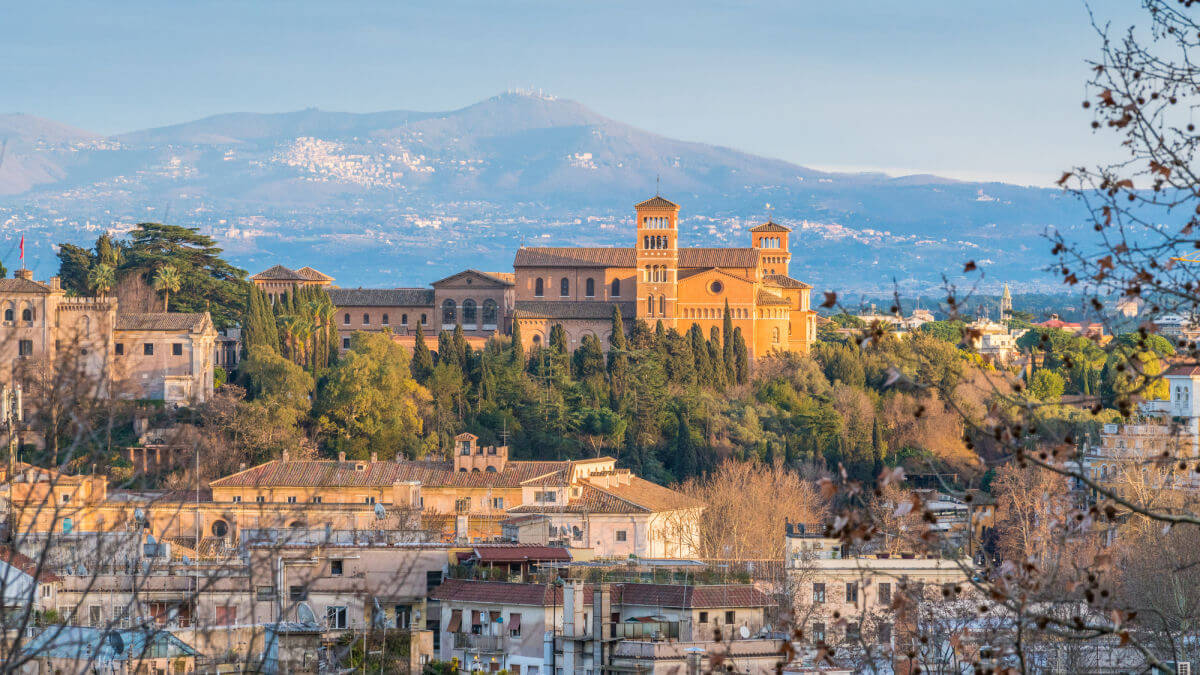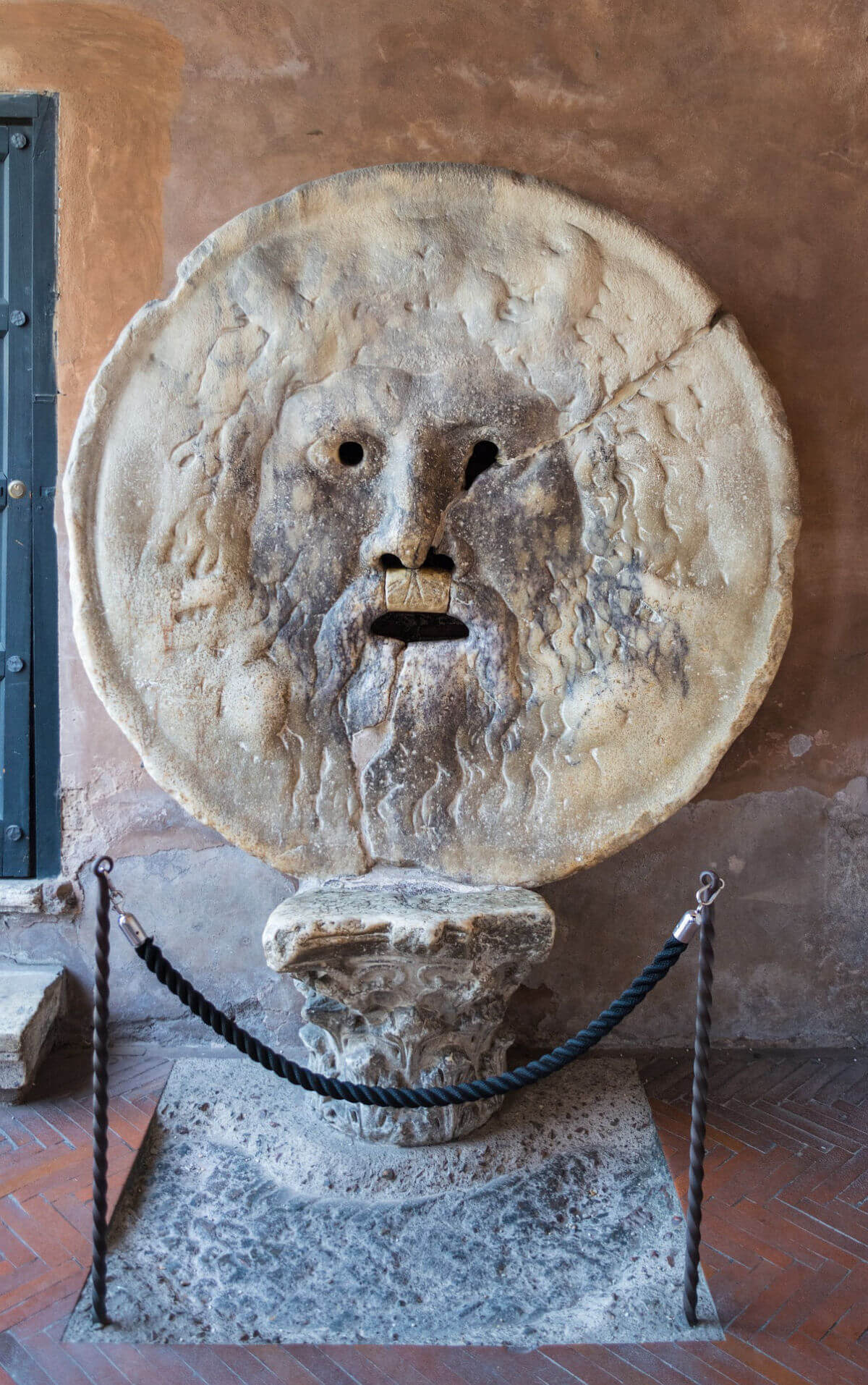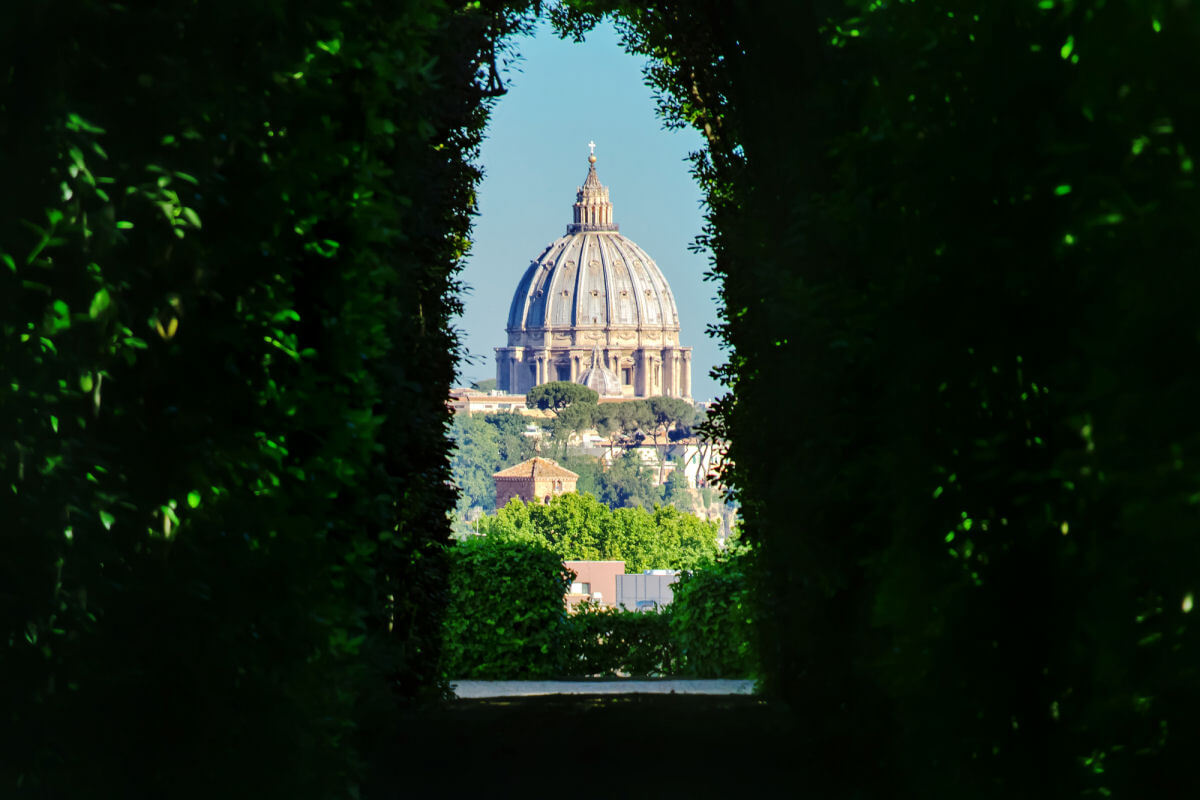Introduction
The Aventine Hill, a jewel among Rome's legendary Seven Hills, emerges as a beacon of historical richness, encapsulating centuries of the city's storied past. This southernmost hill has evolved into a serene and picturesque residential area featuring lush greenery, a tranquil ambiance, and stunning panoramic views. Residents and visitors alike can immerse themselves in the captivating atmosphere while exploring the remnants of ancient Rome.

A view of the Aventine Hill featuring the Basilica of Santa Sabina
Over time, the Aventine Hill has played a vital role in shaping Rome's mythology and development. Situated to the east of the Tiber River and with two distinct heights, known as Aventinus Major and Aventinus Minor, the hill stands 46 meters above sea level and is separated from the Palatine Hill by the iconic Circus Maximus.
The Aventine Hill is part of the modern twelfth district of Rome, called Ripa, and it is significant to contemporary Roman culture. Several religious structures, parks, and historical sites adorn the slopes of the Aventine Hill. Among them, the Basilica of Santa Sabina stands out as the oldest Roman Basilica, built between 422 and 432 AD. The charming Orange Garden boasts breathtaking views of the city, while the ancient legend of Romulus and Remus and the founding of the city adds a layer of mystique to this enchanting corner of Rome.
Historical Overview
During the Roman Republic era, the Aventine Hill was a notable area in ancient Rome known for its diverse population. This hill accommodated both the common people, known as plebeians, and, in later periods, members of the city's elite. Its demographic diversity made the Aventine a unique and socially significant part of Rome.
Historically, the Aventine Hill was a central location for plebeian gatherings and religious practices. It served as a significant counterpoint to the political structure dominated by the patricians, the aristocratic class of ancient Rome. The hill was often associated with plebeian resistance and solidarity, reflecting the ongoing social and political struggles between the plebeians and patricians.
The Aventine's role in Roman history is marked by its significance as a focal point for political activities and protests by the plebeian class. Its history is emblematic of the broader narrative of class struggle in the Roman Republic, making the Aventine Hill a symbol of plebeian identity and resistance in the heart of Rome.
The Aventine Hill's association with Servius Tullius, Rome's sixth king, is also noteworthy. Tullius is a prominent person in Roman history, often credited with pivotal developments in Rome's early urban and military advancements. Among his most notable contributions is the construction of the Servian Walls, an extensive defensive structure encircling much of Rome. These walls were a monumental construction project, symbolizing Rome's growing power and the need for protection against external threats.
However, a striking aspect of the Servian Wall's design was the exclusion of the Aventine Hill from its protective embrace. The Aventine, known for its sacred temples and later as a residential area for the Roman plebeian class, was conspicuously left outside the bounds of these formidable defenses. This decision by Tullius - or perhaps his successors if the walls were constructed later, as many historians suggest - has been a subject of intrigue and speculation for centuries.
Several theories have been proposed to explain why the Aventine was not enclosed within the Servian Walls. One possibility is that during the time of the wall's construction, the Aventine Hill was not yet fully integrated into the urban landscape of Rome, possibly due to its topography or the socio-political dynamics of the time. Another theory suggests that its exclusion was a strategic choice, perhaps to facilitate expansion or to serve specific military or civic functions. Alternatively, the Aventine's exclusion might have been due to limitations in resources or construction techniques available at the time. The exact reasons for its exclusion continue to be a topic of historical debate.
Architectural Landmarks, Cultural Significance and Tourist Attractions
In the midst of Rome's bustling modern cityscape, the architectural landmarks of the Aventine Hill provide visitors with a captivating glimpse into the past, showcasing the area's rich cultural heritage and the stunning beauty of Rome's timeless architecture.
In Roman mythology, the Aventine Hill has a direct connection to the story of the city's founders, Romulus and Remus. The tale goes that the twins were abandoned as infants and raised by a she-wolf on the banks of the Tiber River, near the Aventine Hill. This connection established the hill as an essential landmark in the mythical origins of Rome.
Christianity has also left its mark on the Aventine Hill, with the construction of several churches and religious structures. The churches on this hill are renowned for their art and architecture. One of the most prominent architectural landmarks on the Aventine Hill, as mentioned in the introduction, is the Basilica of Santa Sabina. Founded in the 5th century AD, the basilica was rebuilt in 1216 by Pope Honorius III and restored in 1582 and 1750. Its location in the heart of Rome, next to the famous Orange Garden, makes it a must-see attraction for visitors.
There is also the Basilica of Santa Maria in Cosmedin, which houses the Mouth of Truth – a marble face that is one of Rome's iconic tourist attractions. Known in Italian as "Bocca della Verità," this large, disc-shaped sculpture, resembling a human face with an open mouth, dates back to ancient times and is believed to have been created around the 1st century AD, although its exact origins are unclear.
The Mouth of Truth gained its fame primarily from a legend that dates back to the Middle Ages. According to this legend, the mask had the ability to detect lies. It was believed that if a person told a lie with their hand inside the mouth of the sculpture, it would bite off the hand of the liar. This has made it a popular spot for visitors who often place their hand in its mouth while taking photos.
Historically, the sculpture may have originally been a drain cover or part of a fountain, given its design and the hole in the mouth. The face depicted is generally thought to represent a river god, due to the style of the carving and the depiction of flowing hair, which is characteristic of such representations in ancient art. Today, it continues to be a popular tourist attraction, not only for its intriguing legend but also as a remarkable example of Roman art and mythology.

The Mouth of Truth
Another important landmark situated on the Aventine Hill is the Church of Santa Prisca. This ancient church offers a fascinating insight into Rome's rich architectural and religious history. Similarly, the Church of San Anselmo is also worth exploring, showcasing the grandeur and elegance of Rome's religious architecture.
The Aventine Hill in Rome is notably the site of the Grand Priory of Rome of the Sovereign Military Order of Malta (SMOM), commonly referred to as the Knights of Malta. This institution, steeped in a rich history dating back to the Crusades, is a Roman Catholic lay religious order recognized for its extensive humanitarian and medical aid efforts.
The Order of Malta is a discrete yet prominent entity, functioning with its own distinct set of passports and stamps, and engaging in diplomatic relations with numerous countries. Although it lacks territorial sovereignty, it holds extraterritorial status for its properties, including the Villa del Priorato di Malta on the Aventine Hill.
This establishment is not only significant for its historical and religious connections, but also for offering one of Rome's most enchanting vistas. Through the keyhole of its main gate, one can glimpse a perfectly framed view of St. Peter's Basilica, a sight that draws visitors from around the world.

St Peter's Basilica through the keyhole at the Priory of the Knights of Malta
Aside from its Christian heritage, the Aventine Hill also offers glimpses into the earlier ancient Roman religion. The Temple of Diana, for example, stands as a testament to Rome's rich pagan past. Although only scant remains of the temple are visible today, it still sparks the curiosity and imagination of those who visit the Aventine Hill.
A stroll around the Aventine Hill reveals several picturesque gardens and parks. One of the most prominent gardens is the Orange Garden, or Giardino degli Aranci, which offers breathtaking views of the city from its terraces, and attracts numerous visitors each year with its serene ambiance and enchanting views of Rome. This tranquil garden features an abundance of orange trees, providing a peaceful retreat from bustling city life. The garden's lush orange trees add a touch of color and fragrance to the park, making it an ideal spot for relaxation and reflection.
The geographical features of the Aventine Hill contribute to unique perspectives of Rome's skyline. From various vantage points on the hill, visitors can take in stunning panoramic views of the Tiber River, the Vatican, Trastevere, and other surrounding hills.
The splendid Circus Maximus, an ancient Roman chariot racing stadium and mass entertainment venue, is located in the valley between the Aventine and Palatine hills. This massive site once accommodated over 150,000 spectators and now serves as a public park.
Another gem is the Municipal Rose Garden (Roseto Comunale), nestled on the slopes of the hill. Every year, this enchanting garden comes alive with a myriad of rose varieties from around the world, and provides an ideal romantic setting for strolls and leisurely picnics. It proudly hosts more than 1,000 species of roses and offers a picturesque setting overlooking the Circus Maximus and the Palatine.
To sum up, the cultural significance of the Aventine Hill is unarguable, as it embodies the diverse and rich history of Rome, uniting elements of mythology, Christianity, ancient entertainment, and natural wonders. Visiting this remarkable hill allows one to connect with the city's past and immerse themselves in its timeless appeal. The quaint alleys and cobblestone streets of the Aventine Hill are perfect for leisurely strolls. There are plenty of excellent restaurants and cafés nestled in the area, serving delicious Italian cuisine for visitors to indulge in after a day of sightseeing.
Modern Day Aventine Hill
The Aventine Hill is now an upscale residential area known for its leafy streets and elegant homes. Today, visitors exploring the Aventine Hill will find it easy to navigate the area with the help of the local tram system, which connects the hill to other points of interest across Rome. Various embassies and diplomatic missions can also be found in the vicinity of the Aventine Hill.
Getting to the Aventine Hill is convenient, as it is close to the Metro station of Circo Massimo, making it easily accessible for visitors. The historic center of Rome is also within reach, offering ample opportunities to explore the rich history and culture of the city.
New construction projects and renovations are often undertaken to maintain the charm and allure of the Aventine Hill. These projects are designed to protect the historical integrity of the area while, at the same time, also catering to the needs of contemporary living. This harmonious blend of the old and new truly encapsulates the essence of the modern-day Aventine Hill.
Related External Website
Aventine Hill Guide, Rome | Wandering Italy


